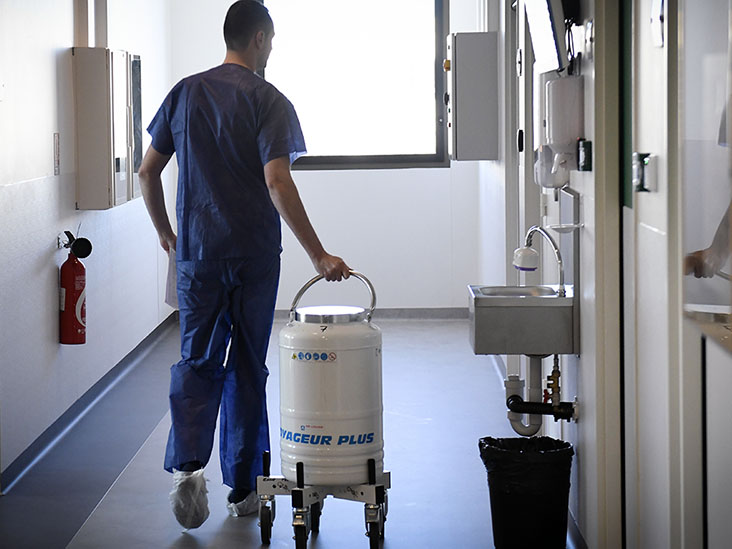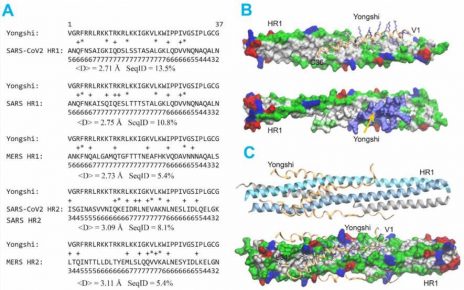
- On February 28, 2022, the Food and Drug Administration (FDA) approved ciltacabtagene autoleucel (cilta-cel) therapy to treat multiple myeloma in people who relapsed or did not respond to three or more therapies.
- Participants receiving cilta-cel showed a greater depth of response over time, with a complete response and normal bone marrow markers increasing from 67% at about 12 months to 83% at 22 months.
- The 2-year survival without worsening multiple myeloma was about 61%, and the overall survival rate was 74%.
- Side effects included low blood cell counts, cytokine release syndrome, and nervous system problems.
The American Cancer Society estimates that, in 2021, approximately 35,000 people received a diagnosis of multiple myeloma, and 12,000 people died from the disease.
In response to an infection, the body activates white blood cells in the bone marrow called B lymphocytes, which transform into plasma cells. Multiple myeloma is an uncommon incurable cancer where plasma cells grow out of control.
Plasma cells produce antibodies, or immunoglobulins, to fight bacterial and viral infection. Bone marrow, a spongy substance inside bones, also contains other types of cells: white blood cells that fight infection, red blood cells that carry oxygen to tissues in the body, and platelets that clot the blood to stop bleeding.
Due to the uncontrolled growth of plasma cells in the bone marrow, people with multiple myeloma may develop:
- decreased red blood counts — anemia
- low platelets — which leads to increased bruising and bleeding
- decreased white blood cells — which makes it more difficult for the body to fend off infection
Additionally, the abnormal plasma cells secrete antibodies that cause kidney damage.
Drug treatment options
Treatment options for multiple myeloma depend on the cancer stage and risk factors; they include:
- immunomodulators: thalidomide, lenalidomide, pomalidomide
- proteasome inhibitors: bortezomib, carfilzomib, ixazomib
- anti-CD38 monoclonal antibodies: daratumumab, isatuximab
- SLAMF7 antibodies: elotuzumab
- antibody-drug conjugate: belantamab mafodotin-blmf
- nuclear export inhibitor: selinexor
- chemotherapy: bendamustine, cyclophosphamide, doxorubicin, liposomal doxorubicin, etoposide, melphalan
- corticosteroids: dexamethasone, prednisone
People with active multiple myeloma usually receive combination therapy with two or three drugs to improve response rates. The choice of drug therapy depends on whether the provider plans treatment with a stem cell transplant, how well their kidneys are functioning, age, stage, individual preferences, and overall health.
A stem cell transplant involves getting new healthy stem cells from a donor, which can develop into healthy bone marrow cells. Before the transplant, recipients receive high dose chemotherapy to kill all bone marrow cells.
Some people receive additional treatment cycles to improve the chances of a complete response after stem cell transplant.
Doctors may give people with multiple myeloma long-term maintenance treatment with bortezomib or lenalidomide to delay reoccurrence. People who did not have a stem cell transplant may also receive this treatment.
If one drug combination stops working, doctors offer therapy with other medications.
Dr. Jack Jacoub, MD, a medical oncologist and medical director of MemorialCare Cancer Institute at Orange Coast Medical Center in Fountain Valley, CA, in an interview with MNT, explained:
“The problem is that myeloma is incurable — that’s why follow-up also becomes an important issue. You get great responses, but they’re not durable.”
He continued, “We end up having to do […] bone marrow transplants, and then people relapse, and then we [use] other drugs.”
After failing multiple different types of multiple myeloma treatment, multiple chimeric antigen receptor (CAR T cell) therapy is an option.
On March 26, 2021, the FDA approved the first CAR T cell therapy for multiple myeloma — idecabtagene vicleucel (Abecma).
Yesterday, they approved cilta-cel, a second CAR T cell therapy option in people with multiple myeloma who relapsed or were unresponsive to prior treatment.
How does cilta-cel work?
In CAR T cell treatment, healthcare workers remove T cells — white blood cells that fight infection — from the blood of the person with multiple myeloma through a process called leukapheresis.
The blood passes through a machine that removes the T cells and infuses the remaining blood back into the patient, taking several hours.
The T cells are frozen and sent to a laboratory. Scientists then alter the T cells so that they have receptors that bind to specific proteins on cancer cells.
Dr. Jacoub explained, “CAR [T cell therapy] is a technology [that harnesses] the body’s immune system and redirects it against the disease. In multiple myeloma, the B-cell maturation antigen (BCMA) is the target, and that’s where the CAR T cells bind.”
BCMA is a flag specific for multiple myeloma cells and is vital for the survival of plasma cells in the bone marrow. Cilta-cel has two antibodies that target BCMA and attach to the multiple myeloma cells in the body to help the immune system kill the cancer cells.
Is cilta-cel effective?
The ongoing CARTITUDE-1 study enrolled participants 18 years and older with multiple myeloma who failed three or more previous treatments. All 97 participants, with an average of six prior therapies, received a single infusion of cilta-cel CAR T cell therapy.
After a follow-up of about 12 months, approximately 67% achieved a stringent complete response, with 97% responding to treatment overall. A stringent complete response is a disappearance of all signs of cancer with normal bone marrow markers and cells.
In total, 93% had no minimal residual disease (MRD). MRD refers to the small numbers of cancer cells that can remain after treatment, and MRD negativity means that the researchers detected no disease after treatment.
Participants receiving cilta-cel had a greater depth of response over time, with the stringent complete response rate increasing from 67% at about 12 months to 83% at 22 months. Two-year progression-free survival (PFS) rates were about 61%, and overall survival rates were 74%.
The PFS rate is the percentage of people surviving after treatment without their cancer worsening, and the overall survival rate is the percentage who are still alive.
However, 2-year PFS rates were higher in those participants achieving MRD negativity. Those who had no detectable disease after cilta-cel treatment for 6 months or more had a 2-year PFS rate of 91%, and those with no detectable disease for 12 months or more had a PFS of 100%.
“This was a highly refractory group of patients that really didn’t have […] a lot of good options. To be able to achieve the response rates that they achieved […] and increasing the depth of response with time is really just impressive.”
– Dr. Jakoub
He added, “Median prognosis [for multiple myeloma] can be seen beyond 6 years up to 9 years because the drugs have become so good. To demonstrate cure, you would need follow-up over a decade over that.”
Is cilta-cel safe?
The most common blood-related side effects occurring in the clinical trials were abnormal blood counts: low neutrophils (95%), reduced red blood cells (68%), low platelets (60%), and decreased lymphocytes (50%).
Cytokine release syndrome (CRS) occurred in 95% of participants, usually with onset around 7 days and resolving within 14 days, with only 4% severe cases. Symptoms include low blood pressure, difficulty breathing, high fever, rapid heart rate, rash, and nausea.
Immune effector cell-associated neurotoxicity syndrome (ICANS), a condition affecting the nervous system, occurred in 17% of participants; 14% of cases were mild. Symptoms of neurotoxicity may include headache, confusion, seizures, brain swelling, altered consciousness, difficulty speaking, and tremor.
Dr. Jacoub stated the benefits of cilta-cel therapy might outweigh the adverse effects for multiple myeloma patients who have already tried various medications.
He explained, “This is a meaningful, significant step forward for patients. Myeloma [has] many drugs available now.”
Dr. Jacoub concluded, “[O]ne of the biggest struggles among doctors is which drug to go with next after failing an immunomodulator and a proteasome inhibitor. So, [cilta-cel] will be added to the mix.”
Source: Read Full Article



